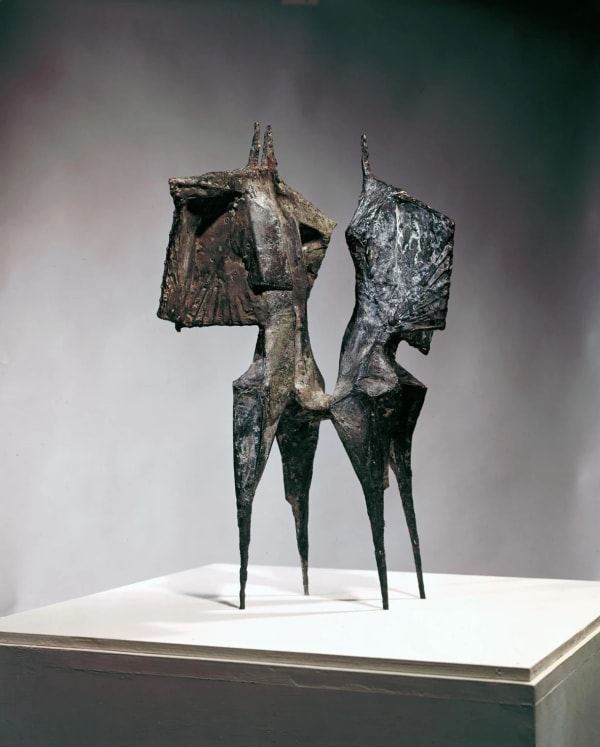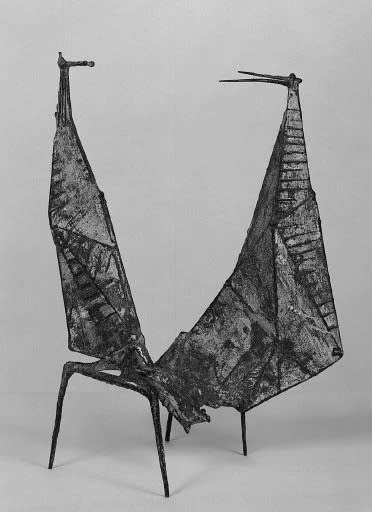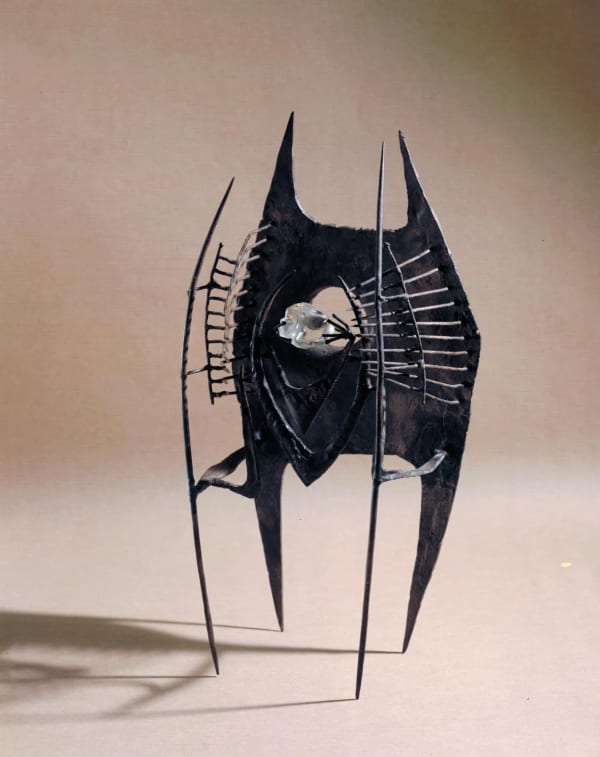The Tate Britain, in London, holds twenty-seven of Chadwick's works, eighteen of which are on display.
The Tate Britain is the National Gallery of British Art and home to the greatest collection of British art in the world.
-
-

Winged Figures
1955View on Tate WebsiteInscr. ‘Chadwick 172 5/6’ on right thigh of the smaller figure.
Bronze22 x 17 x 14 (56 x 43 x 36).
-

Conjunction
1953View on Tate WebsiteIron and plaster
420 x 320 x 220 mm
Display Caption:
Chadwick was one of the leading sculptors of the twentieth century. He trained at the Merchant Taylors’ School and worked as an architectural draughtsman before becoming an artist. In 1956 he gained international recognition when he won the International Prize for Sculpture at the Venice Biennale. He was awarded the CBE in 1964.Conjunction is one of Chadwick’s first sculptures of a human couple. It has powdered iron on its surface which has since rusted. This gives the sculpture its distinctive colour.
-

The Fisheater
1951View on Tate WebsiteIron and copper
Display Caption:
This is the masterpiece of Chadwick’s early work during which, like many of his contemporaries, he produced forms based on ideas of nature. He saw nature as violent and dangerous. Many commentators at the time, in particular the leading critic Herbert Read, saw this as an intuitive response to the violence of recent times and to the anxieties of nuclear age.Although the titles and appearance of such works often suggest particular animals, the artist usually discussed them in terms of their form and manufacture.
-

Maquette for R34 Memorial
1957, cast 2003View on Tate WebsiteBronze
345 x 390 x 110 mm
Display Caption:
Chadwick was commissioned to produce a memorial to commemorate the first double crossing of the Atlantic by the airship R34 in July 1919. It was intended for London (Heathrow) Airport but the commission was cancelled as some people didn't like his proposal. This is a bronze cast of the model; the full-size work was made as Stranger III. Here, a winged figure seems an appropriate subject to commemorate a feat of manned flight, while the two heads probably refer to the two-way crossing made by the R34. -

Inner Eye (Maquette III)
1952View on Tate WebsiteIron and glass
286 x 152 x 102 mm
Display Caption:
Chadwick made a series of works like this on different scales; the largest is 90 inches (228 cm) high. It stands a little like a human figure or an animal but resists any direct association with a particular living creature. It is brilliantly ambiguous in its suggestive forms: the iron rods could be seen as ribs or as some sort of cage. The chunk of glass gives it a mystical or ritualistic feel, while its title suggests a psychological dimension. -

Stabile with Mobile Elements (Maquette for ‘Cypress’)
1950View on Tate WebsiteCopper and brass on slate base
685 x 200 x 200 mm
Display Caption:
The Festival of Britain in 1951 was conceived by the Labour government as a celebration of recovery and of British identity following the Second World War. The focal point of this national event was an exhibition on London’s South Bank. Artists made works for the Festival and this is a model for a four metre high sculpture in the small garden of the Regatta Restaurant. The sinuous form of this sculpture and its green colouring recall cypress trees, seen widely in southern Europe, from which the work gets its subtitle.
-





